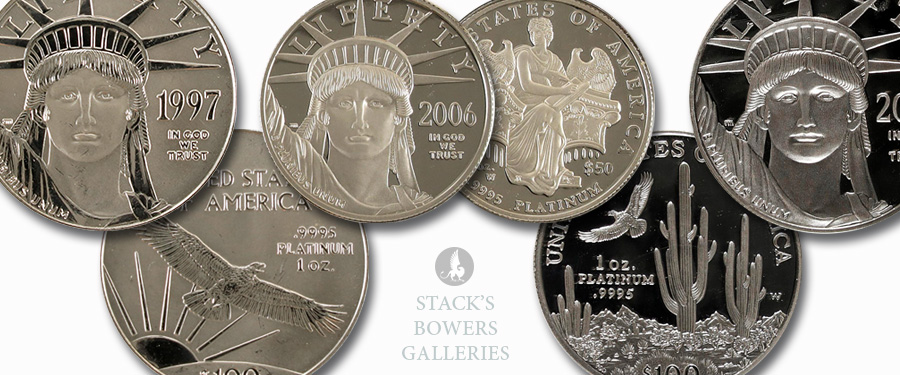
On September 30, 1996, President Bill Clinton signed Public Law 104-208, which authorized the production of platinum bullion coins. The coins were first struck and issued in 1997 in 1/10, ¼, ½, and one ounce sizes, denominated $10, $25, $50, and $100, respectively. $100 is the highest denomination of coin produced by the U.S. Mint. The coins went on sale June 6. The fractional denominations were retired after 2008. Proof versions have been produced since the series’ introduction and Burnished versions were produced from 2006 to 2008.
The U.S. was relatively late to the platinum bullion coin game. Though platinum coins had been experimented with and circulated briefly in some societies – notably Russia in the early-to-mid 19th century – platinum bullion coins were not issued until the 1980s. Other countries had been producing platinum bullion coins for a decade or more preceding the U.S. Platinum eagles’ introduction.
Platinum eagles have featured motifs from a number of rotating themed design programs. From 1998 to 2002, for example, vistas from different regions of the U.S. appeared on the coins’ reverses. The most recent program, which began in 2021 and will conclude in 2025, features annual rotating designs depicting the “Five Freedoms” enshrined in the Constitution’s First Amendment.
American Platinum Eagles regularly appear in Stack’s Bowers’ Galleries Precious Metals Auctions. Interested readers should visit our website.
Other notable numismatic events that took place on September 30:
• In 1803, the Philadelphia Mint closed owing to an outbreak of Yellow Fever.
• In 2017, the Mint suspended mail ordering of numismatic products. Product catalogs mailed in January 2016 were the Mint’s first that did include a mail-order form.





